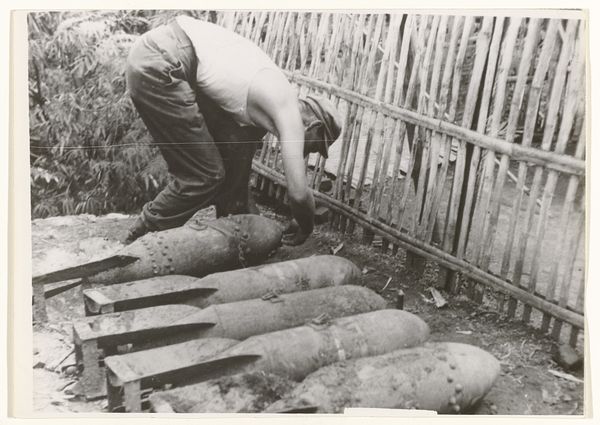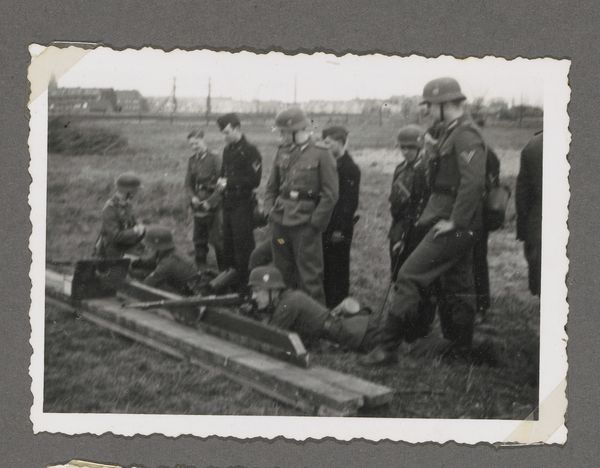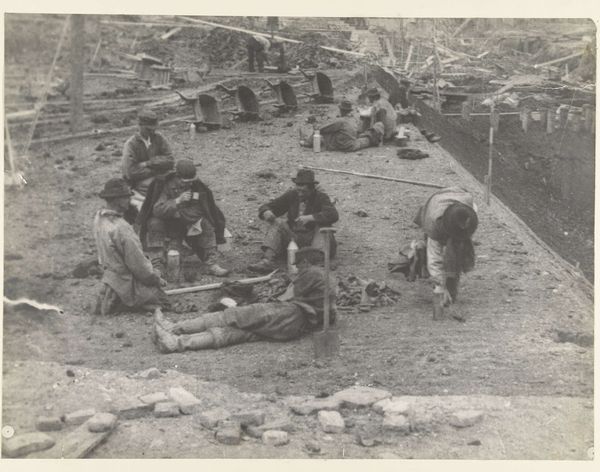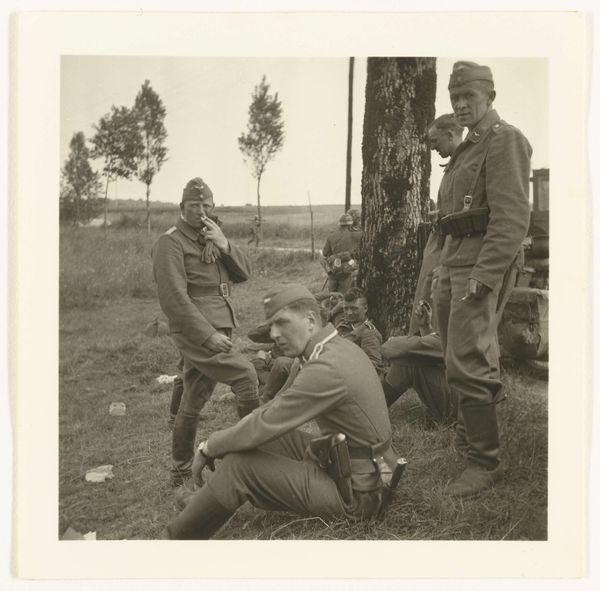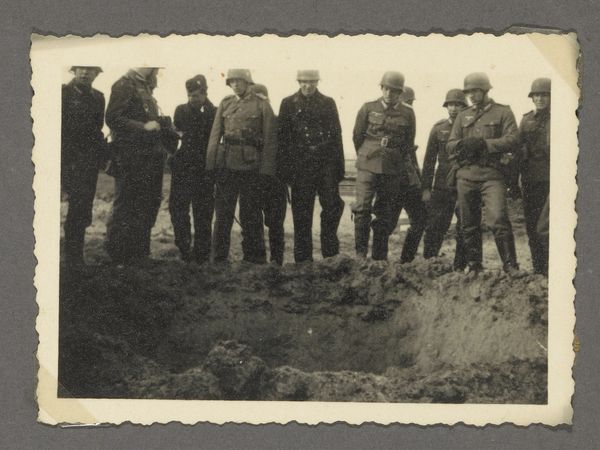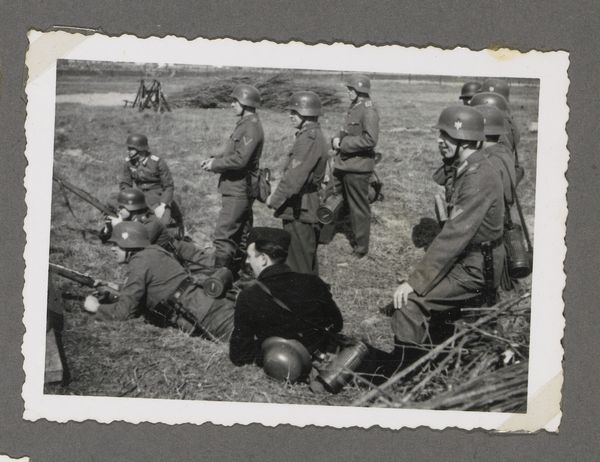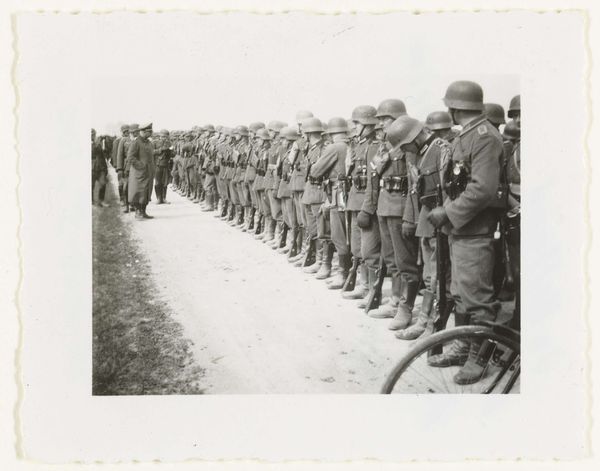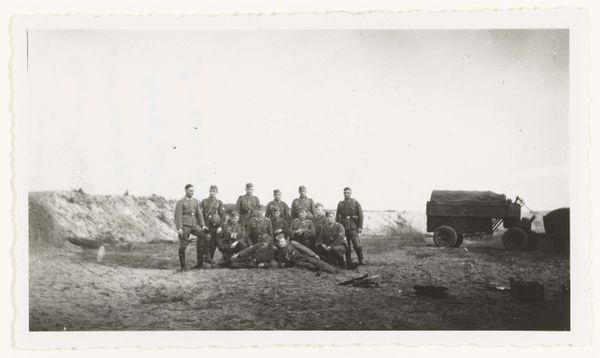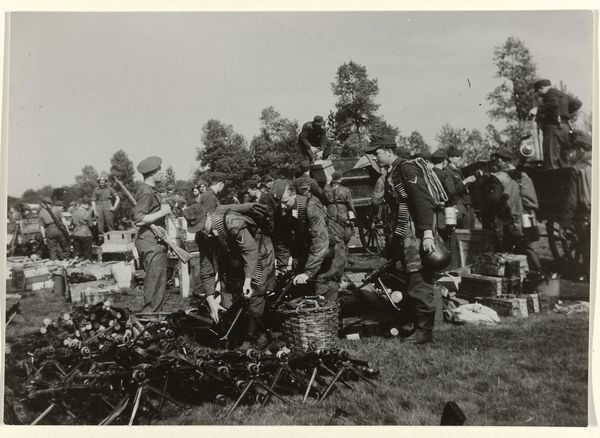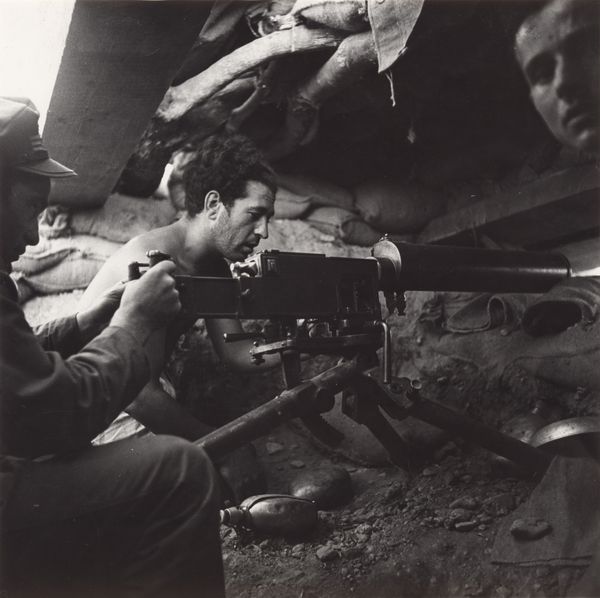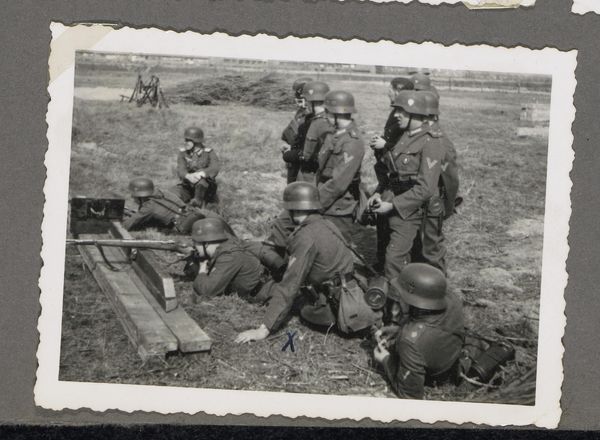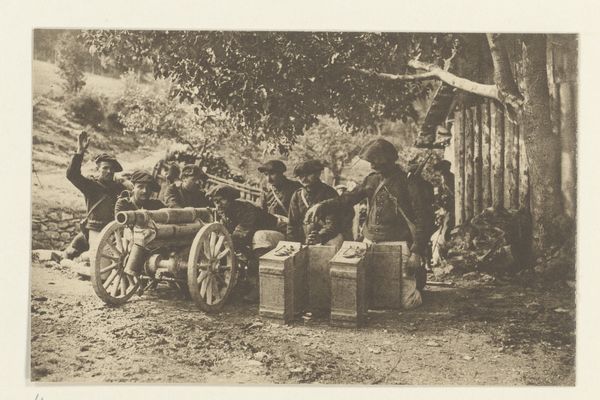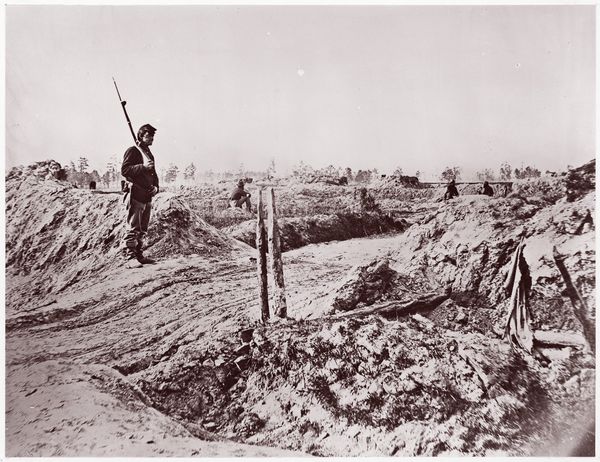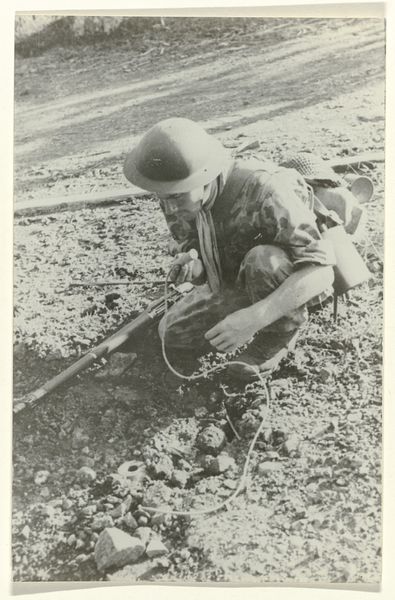
Rijkspolitie spreekt kinderen toe bij het oprapen van wapens van de slagvelden in Zuid-Nederland Possibly 1945
0:00
0:00
Dimensions: width 11 cm, height 15 cm
Copyright: Rijks Museum: Open Domain
Curator: Looking at this gelatin-silver print by Charles Breijer, likely taken around 1945, one immediately confronts a stark image of postwar Netherlands. It's titled "Rijkspolitie spreekt kinderen toe bij het oprapen van wapens van de slagvelden in Zuid-Nederland," which translates to "National Police Addressing Children Picking Up Weapons from the Battlefields in the Southern Netherlands." Editor: It's a haunting scene. The contrast between the uniformed police and the group of children creates a really disturbing juxtaposition. The shell casings littering the foreground give you an uneasy sense of just how dangerous the war's leftovers could be. Curator: Precisely. Breijer captures a pivotal moment, revealing how the community, and particularly children, were involved in clearing remnants of war. The police represent an effort to instill order, but their presence underscores the pervasive instability that lingered long after the official end of conflict. Think of it as a history painting caught with photography. Editor: Absolutely. What strikes me is how normalized the scene appears to be. These kids are participating in what seems to be community service, casually surrounded by implements of destruction. There’s something so unsettling about that acceptance. How can we possibly calculate the long term impacts of this? Curator: Indeed. This photograph brings up many questions about childhood innocence and the psychological impact of war on civilians. Moreover, consider the potential socio-economic factors compelling children into such hazardous situations; it highlights how wartime needs shift when we reach the postwar moment. Editor: And whose responsibility was it, really? The photograph asks us to think about those unacknowledged burdens and the cost to those most vulnerable. It becomes a really compelling argument about the responsibility of governments when conflict ends. What kind of societal healing must be possible to repair that trauma, particularly given how casually it seems to be accepted. Curator: I think Breijer managed to create a very direct window into a difficult period. Editor: Agreed. Its rawness gives an unfiltered lens into this history. It challenges viewers to look beyond conventional heroism of war, bringing to the fore difficult stories and quiet moments that deserve a place of prominence in collective memory.
Comments
No comments
Be the first to comment and join the conversation on the ultimate creative platform.
